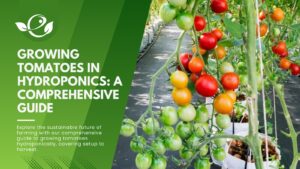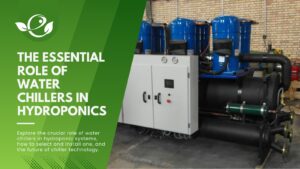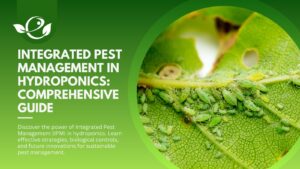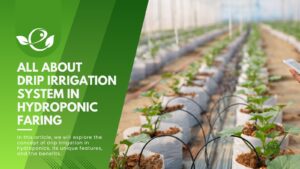Table of Contents
Hydroponic gardening is a modern method of cultivating plants without soil, instead utilizing nutrient-rich water solutions to deliver essential nutrients directly to plant roots. However, ensuring the proper balance of nutrients is critical for the success of hydroponic systems. In this comprehensive guide, we will explore the intricacies of nutrient deficiencies in hydroponic gardening and provide a detailed roadmap for gardeners to effectively troubleshoot and resolve these issues.
Understanding Nutrient Deficiencies
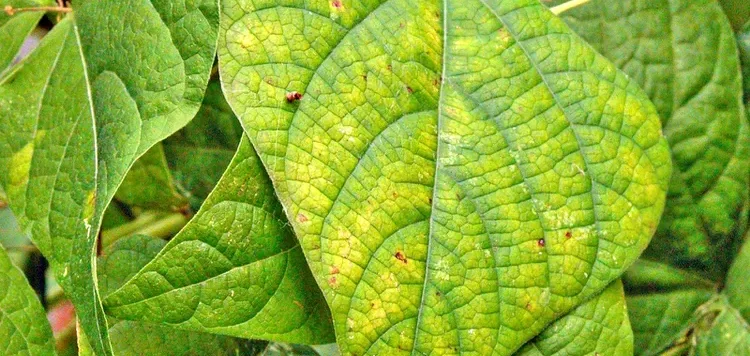
Hydroponic plants, like their soil-grown counterparts, require a range of essential nutrients for healthy growth and development. These include macronutrients such as nitrogen (N), phosphorus (P), and potassium (K), as well as micronutrients like iron (Fe), zinc (Zn), and magnesium (Mg). Each nutrient plays a unique role in various biochemical processes within the plant, and deficiencies can lead to a range of symptoms that adversely affect plant health.
Symptoms of Nutrient Deficiencies
Identifying nutrient deficiencies in hydroponic plants requires keen observation and an understanding of the visual cues associated with different nutrient deficiencies. Common symptoms include chlorosis (yellowing) or necrosis (browning) of leaves, stunted growth, reduced flowering or fruiting, and abnormal leaf patterns. These symptoms can vary depending on the specific nutrient that is deficient and the severity of the deficiency.
Factors Affecting Nutrient Uptake
Several factors can influence nutrient uptake in hydroponic systems, including pH levels of the nutrient solution, electrical conductivity (EC) of the nutrient solution, temperature, humidity levels, and root health. Understanding how these factors interact with nutrient uptake can help gardeners diagnose and address nutrient deficiencies effectively.
Identifying Nutrient Deficiencies
Accurately diagnosing nutrient deficiencies is essential for implementing the appropriate corrective measures. Gardeners can employ various techniques for identification, including visual inspection and diagnostic tools.
Visual Inspection Techniques
Visual inspection involves closely examining plant symptoms to identify signs of nutrient deficiencies. This includes observing leaf colour, texture, and overall plant health. For example, nitrogen deficiency often manifests as uniform yellowing of older leaves, while iron deficiency may result in interveinal chlorosis (yellowing between leaf veins).
Diagnostic Tools
Advanced diagnostic tools, such as pH meters, EC meters, and nutrient solution test kits, provide quantitative data to assess nutrient levels accurately. These tools allow gardeners to measure the pH and EC levels of the nutrient solution and conduct nutrient solution analysis to identify specific deficiencies.
Common Nutrient Deficiency Patterns in Hydroponic Systems
- Nitrogen (N) Deficiency:
- Symptoms: Uniform yellowing (chlorosis) of older leaves starting from the bottom of the plant, stunted growth.
- Cause: Inadequate nitrogen supply in the nutrient solution.
- Resolution: Increase nitrogen concentration in the nutrient solution by adjusting fertilizer ratios or supplementing with nitrogen-rich additives.
- Phosphorus (P) Deficiency:
- Symptoms: Purplish discolouration of leaves, slow or stunted growth, reduced fruit or flower production.
- Cause: Insufficient phosphorus availability in the nutrient solution.
- Resolution: Boost phosphorus levels by adjusting nutrient solution concentrations or incorporating phosphorus supplements.
- Potassium (K) Deficiency:
- Symptoms: Marginal leaf scorching or browning, weak stems, poor fruit quality.
- Cause: Low potassium levels in the nutrient solution.
- Resolution: Increase potassium concentration in the nutrient solution through supplementation or adjusting fertilizer formulations.
- Iron (Fe) Deficiency:
- Symptoms: Interveinal chlorosis (yellowing between leaf veins), reduced leaf size, leaf tip dieback.
- Cause: Inadequate iron availability, especially in alkaline pH conditions.
- Resolution: Add chelated iron supplements to the nutrient solution or adjust pH levels to enhance iron uptake.
- Calcium (Ca) Deficiency:
- Symptoms: Leaf tip and margin necrosis (browning), distorted growth, blossom end rot in fruiting plants.
- Cause: Insufficient calcium supply or imbalance with other nutrients.
- Resolution: Adjust calcium levels in the nutrient solution and ensure proper pH and EC balance to facilitate calcium uptake.
- Magnesium (Mg) Deficiency:
- Symptoms: Interveinal chlorosis starting from the leaf margins, leaf curling, reduced growth.
- Cause: Low magnesium levels in the nutrient solution.
- Resolution: Supplement with magnesium sulfate (Epsom salt) or magnesium nitrate to correct deficiency.
- Zinc (Zn) Deficiency:
- Symptoms: Stunted growth, small or distorted leaves, chlorosis between leaf veins.
- Cause: Inadequate zinc availability in the nutrient solution.
- Resolution: Add zinc sulfate or chelated zinc supplements to the nutrient solution to alleviate deficiency symptoms.
- Manganese (Mn) Deficiency:
- Symptoms: Interveinal chlorosis with green veins, leaf cupping, reduced growth.
- Cause: Low manganese levels or antagonism with other nutrients.
- Resolution: Supplement with manganese sulfate or chelated manganese to correct deficiency.


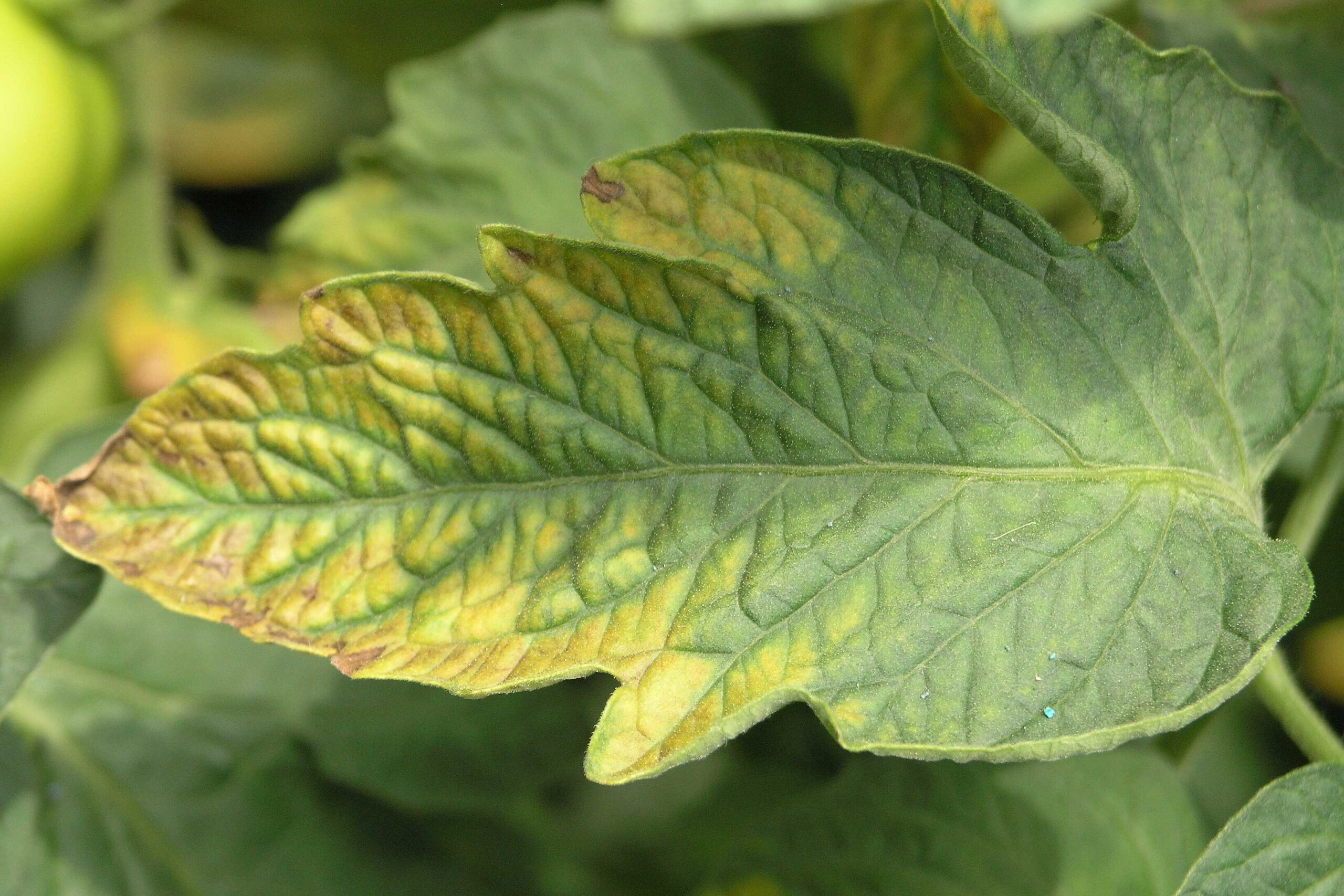

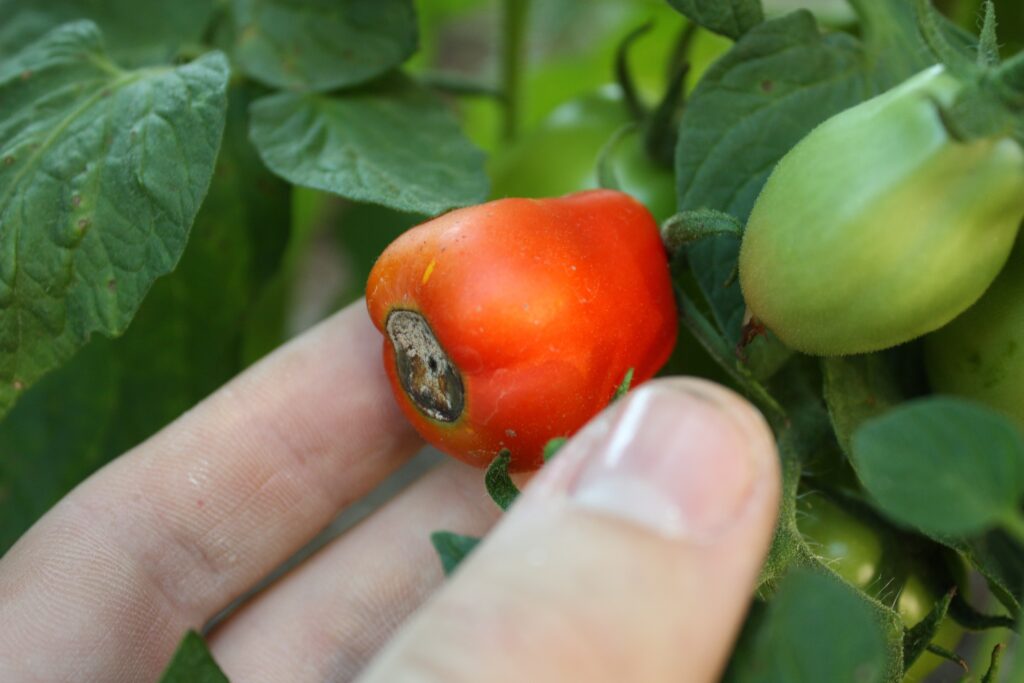
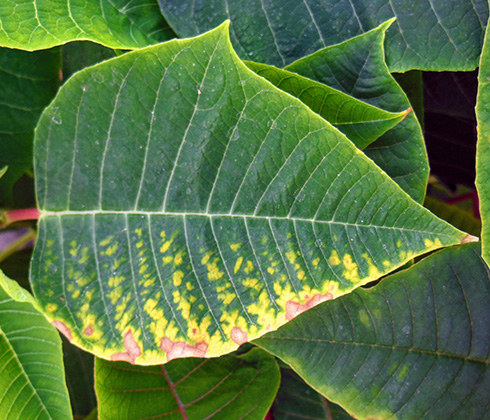
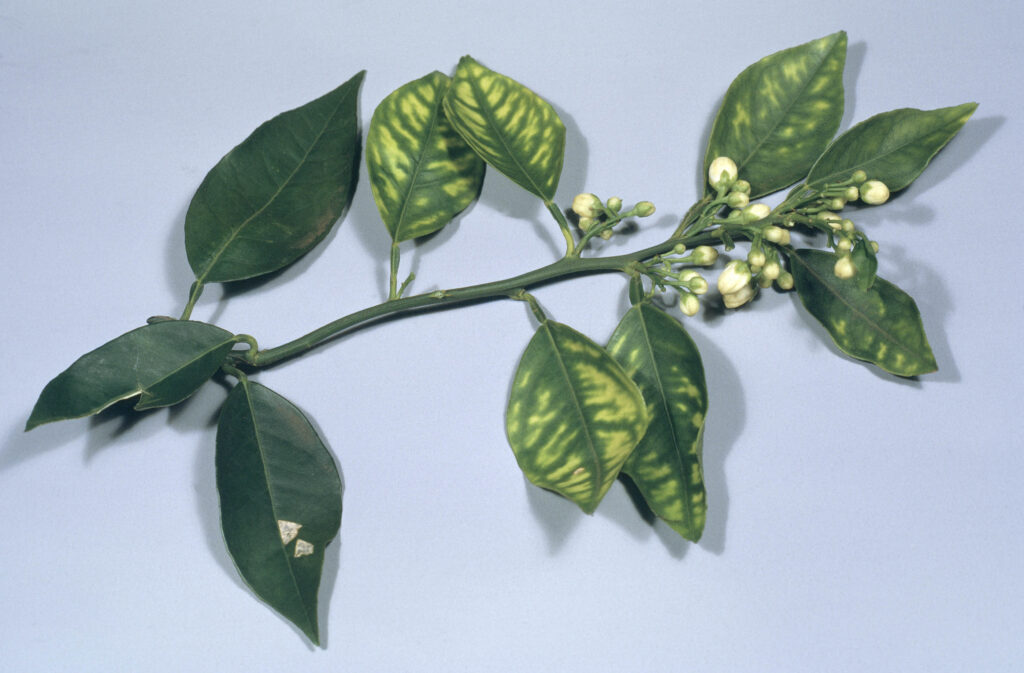
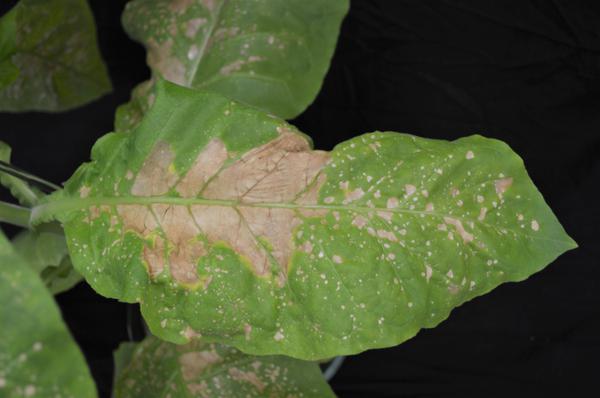
Troubleshooting Guide
Resolving nutrient deficiencies in hydroponic systems requires a systematic approach. The following steps outline a structured process for diagnosing and correcting nutrient deficiencies effectively:
Step-by-Step Process
- Observation: Carefully observe plant symptoms, noting any abnormalities such as leaf discolouration, stunted growth, or abnormal leaf patterns.
- Examination: Assess growing conditions, including temperature, humidity, and lighting, to identify any environmental factors that may be contributing to nutrient deficiencies.
- Testing: Measure pH and EC levels of the nutrient solution using appropriate meters to ensure they fall within the optimal range for nutrient uptake.
- Analysis: Conduct a nutrient solution analysis to determine the specific deficiencies present and their severity.
Correcting Nutrient Deficiencies
Once identified, nutrient deficiencies can be corrected using various supplementation methods and adjustments to growing conditions.
Nutrient Supplementation Methods
- Adjust Nutrient Solution Concentrations: Based on the deficiency analysis, adjust the concentrations of specific nutrients in the nutrient solution to meet the plant’s requirements.
- Apply Foliar Sprays or Root Drenches: Deliver nutrients directly to plants by applying foliar sprays or root drenches, especially in cases where rapid correction is needed.
- Incorporate Micronutrient Supplements: Address specific micronutrient deficiencies by incorporating micronutrient supplements into the nutrient solution.
pH and EC Adjustment Techniques
- Balance pH Levels: Maintain pH levels within the optimal range (typically between 5.5 and 6.5 for most hydroponic crops) to ensure proper nutrient absorption by plants.
- Manage EC Levels: Monitor and adjust the electrical conductivity (EC) of the nutrient solution to maintain appropriate nutrient concentrations for optimal plant growth.
Preventive Measures
Implement strategies to prevent future nutrient imbalances, such as regular monitoring of nutrient levels, maintaining proper pH and EC levels, and providing adequate aeration to the root zone. This proactive approach can help minimize the risk of nutrient deficiencies occurring in the future.
Advanced Techniques for Nutrient Management
For experienced hydroponic gardeners seeking to optimize nutrient management, consider the following advanced techniques:
Automated Monitoring Systems
Utilize sophisticated nutrient monitoring systems equipped with sensors and data logging capabilities to track and adjust nutrient levels automatically. These systems provide real-time monitoring of pH, EC, and nutrient concentrations, allowing for precise nutrient management.
Species-Specific Nutrition
Tailor nutrient solutions to meet the specific requirements of different plant species for optimal growth and yield. Conduct research on the nutrient needs of specific crops and adjust nutrient formulations accordingly to maximize plant health and productivity.
Efficient Delivery Systems
Optimize nutrient delivery systems, such as drip irrigation or aeroponics, to ensure efficient nutrient uptake by plants. Fine-tuning the delivery system can help minimize nutrient waste and ensure that plants receive the nutrients they need precisely when they need them.
Conclusion
In conclusion, resolving nutrient deficiencies in hydroponic systems requires a combination of observation, analysis, and proactive management. By understanding the symptoms, identifying the root causes, and implementing appropriate corrective measures, hydroponic gardeners can ensure healthy and productive plant growth. Remember to stay vigilant, adapt to changing conditions, and continuously refine your nutrient management practices for optimal results.
FAQ
How often should I check nutrient levels in my hydroponic system?
It’s recommended to monitor nutrient levels regularly, ideally every week or two. This helps ensure that nutrient concentrations remain within the optimal range for plant growth.
What is the ideal pH range for hydroponic nutrient solutions?
The ideal pH range for most hydroponic crops is between 5.5 and 6.5. Maintaining pH within this range facilitates optimal nutrient uptake by plants.
How can I adjust pH levels in my nutrient solution?
pH levels can be adjusted using pH up or pH down solutions. Add small amounts of the appropriate solution to the nutrient reservoir and retest until the desired pH level is reached.
What should I do if I notice yellowing leaves in my hydroponic plants?
Yellowing leaves can indicate several potential issues, including nutrient deficiencies (such as nitrogen or iron), pH imbalance, or overwatering. Conduct a thorough assessment of growing conditions and nutrient levels to identify the underlying cause.
Can I reuse nutrient solutions from previous crops?
While it’s possible to reuse nutrient solutions, it’s essential to monitor nutrient levels and pH carefully. Over time, nutrient concentrations may become imbalanced, leading to deficiencies or nutrient lockout. Consider refreshing the nutrient solution periodically for optimal plant health.
What is nutrient lockout, and how can I prevent it?
Nutrient lockout occurs when plants are unable to absorb certain nutrients due to imbalances or antagonistic interactions in the nutrient solution. To prevent nutrient lockout, maintain proper pH and EC levels, avoid over-fertilizing, and ensure adequate aeration in the root zone.
How can I troubleshoot nutrient deficiencies in specific plant species?
Different plant species have unique nutrient requirements and may exhibit specific symptoms of nutrient deficiencies. Refer to plant-specific guides or consult with experienced growers to tailor your troubleshooting approach to the needs of your plants.
What should I do if my plants show signs of nutrient toxicity?
Nutrient toxicity can occur when nutrient levels in the solution are too high. Dilute the nutrient solution with fresh water to lower concentrations, and flush the growing medium to remove excess nutrients. Adjust nutrient concentrations gradually to avoid shocking plants.


